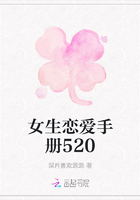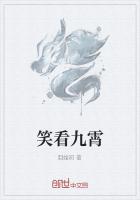It is easy to perceive that when several silver mines were found and the proprietors of land had taken a fancy to this metal, they were imitated by the other classes, and that the pieces and fragments of silver, even when not worked up, were sought after eagerly, because nothing was easier than to make such articles from them as were desired, according to their quantity and weight. As this metal was esteemed as its cost value, at least, a few people who possessed some of it, finding themselves in need, could pawn it to borrow the things they wanted, and even to sell it later outright. Thence arose the custom of fixing its value in proportion to its quantity or weight as against all products and merchandise. But as silver can be combined with iron, lead, tin, copper, etc. which are not such scarce metals and are minded at less expense, the exchange of silver was subject to much fraud, and this caused several kingdoms to establish mints in order to certify by a public coinage the true quantity of silver that each coin contains and to return to individuals who bring bars or ingots of silver to it the same quantity in coins bearing a stamp or certificate of the true quantity of silver they contain.
The costs of these certificates or coinage are sometimes paid by the public, or by the prince, -- the method followed in ancient times at Rome and today in England; sometimes those who take silver to be coined pay for minting as in the custom in France.
Pure silver is hardly ever found in the mines. The ancients did not know the art of refining to perfection. They always made their silver coins of fince silver, and yet those which remain to us of the Greeks, Romans, Jews and Asiatics are never perfectly pure. Today there is more skill, the secret of ****** silver pur has been discovered. The different methods of refining it are not part of my subject. Many authors have treated of it, Mr Boizard among others. I will only observe that there is a good deal of expense in refining silver and for this reason an ounce of fine silver is generally preferred to two ounces which contain one half of copper or other alloy. It is expensive to separate the alloy and extract the one ounce of pure silver which is in these two ounces, while by ****** melting any other metal can be combined with silver in any proportion desired. If copper is sometimes used as an alloy to fine silver it is only to render it more malleable and more suitable for the objects made of it. But in the valuation of all silver the copper or alloy is reckoned at nothing and only the amount of fine pure silver is considered.
For this reason an assay is always made to ascertain the amount of pure silver.
Assaying is merely refining a little piece of a bar of silver, for example, to find how much pure silver it contains and to judge the whole bar by this small sample. A small portion of the bar, 12 grains for example, is cut off and nicely weighed in balances which are so accurate that a thousandth part of a grain will sometimes turn the scale. Then the sample is refined by aquafortis or by fire and the copper or alloy separated. When the silver is pur it is weighed again in the same balance and if it then weighs 11 grains instead of 12 the assayer says that the bar is 11 parts fine, i.e. it contains 11 parts of pure silver and 1 of copper or alloy. This will be more easily understood by those who have the curiosity to see assays carried out. There is nothing mysterious about it. Gold is assayed in the same way, with this difference only that the degrees of fineness of gold are divided into 24 parts called carats, since gold is more precious; and these carats are divided into 32 parts, while the degrees of fineness of silver are only divided into twelfths, called deniers, and these are divided into 24 grains apiece.
Usage has conferred upon gold and silver the title intrinsic value, to designate and signify the quantity of true gold or silver contained in a bar; but in this essay I have always used the term intrinsic value to signify the amount of land and labour which enter into production, not having found any term more suitable to express my meaning. I mention this only to avoid misunderstanding. When gold and silver are not in question the term will always hold good without any confusion.
We have seen that the metals such as gold, silver, iron, etc. serve several purposes and have a value proportionable to the land and labour which enter into their production. We shall see in part II of this essay that men have been forced of necessity to employ a common measure to find in their dealings the proportion and the value of the products and merchandise they wished to exchange. The only question is what product or merchandise would be most suitable for this common measure, and whether it has not been necessity rather that fancy which has given this preference to gold, silver and copper which are generally in use today for this purpose.
Ordinary products like corn, wine, meat, etc. have a real value and serve the needs of life, but they are all perishable and difficult to be transported, and therefore hardly suitable to serve as a common measure.














